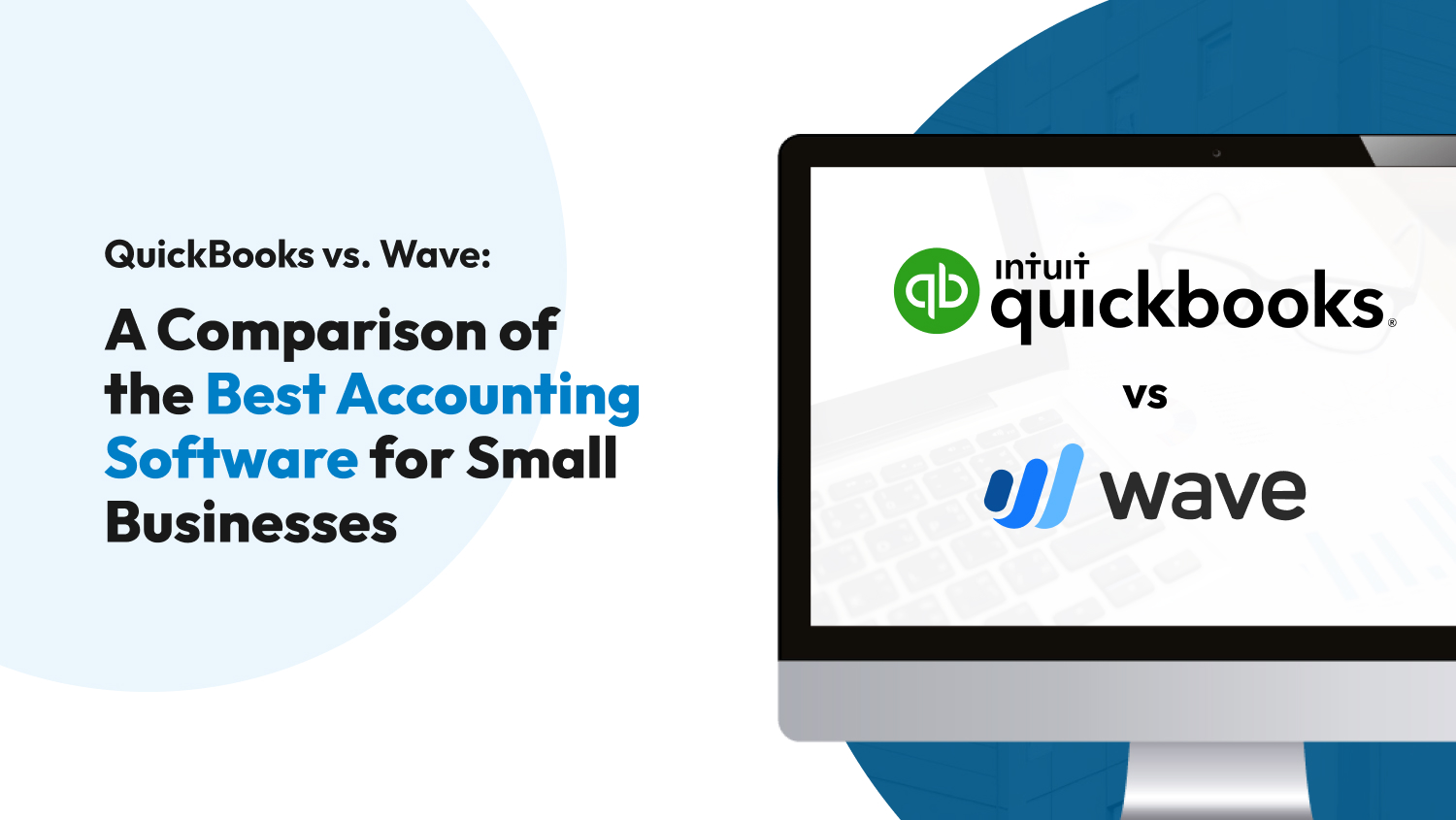Business
QuickBooks vs. Wave: A Comparison of the Best Accounting Software for Small Businesses
A business that thrives is one with a consistent cash flow. The money that goes in your business must be well-maintained and properly tracked. Gone are the days when bookkeepers had to account for your cash flow manually — there are now accounting tools that make the process easier, faster, and more effective.
QuickBooks and Wave are two popular choices for accounting platforms. However, an exhaustive comparison of these tools is time-consuming, so we’ve done the work for you.
In this article, we compare QuickBooks and Wave, establish their strengths and weaknesses, and declare a winner for small businesses. Let’s get started.
QuickBooks vs. Wave: A Side-by-Side Comparison
A comparison is incomplete without specific benchmarks to examine QuickBooks and Wave. That’s why, in this article, we’ll compare these tools using the following criteria:
- Usability and Accessibility
- Invoicing
- Expense Tracking
- Virtual Payment
- Reporting and Analytics
- Third-Party Integrations
- Pricing
Usability and Accessibility
Accounting is a tall task that deals with many numbers and variabilities. An accounting app must ease this burden, not contribute to it. That’s why an accounting tool must be navigable and accessible even for non-tech-savvy users.
Wave has a straightforward and user-friendly interface, with every feature neatly organized in its proper drawers. You can customize the color theme of your interface, too. Wave’s lack of features may be disadvantageous for some, but it helps create a better user experience through its simplicity.
Similarly, QuickBooks also has a customizable interface. Other characteristics of QuickBooks include a sleek and contemporary dashboard and keyboard shortcuts for quick access. However, the extensive feature set of QuickBooks can intimidate new users.
Our Choice: QuickBooks’ modern design helps, but Wave (1-0) is still the winner for usability due to its simplicity.
Invoicing
Record-keeping is an integral part of every accounting software. Invoices help in maintaining transparency, tracking business expenses, and streamlining the billing process.
You don’t have to start from scratch when invoicing in Wave, as it has several invoicing templates you can customize. It also saves user details, improving the usability of its invoicing features. Moreover, you can also send invoices on the go using its Android or iOS app, which is automatically synced to the website interface.
QuickBooks has everything Wave offers and more. It may have a limited number of customizable templates, but it has features such as:
- Estimate-to-invoice pipeline
- Multilingual support
- Reminders for overdue invoices
- Scheduled invoicing
Our Choice: A respectable fight for Wave, but QuickBooks (1-1) takes the invoicing crown.

Expense Tracking
A business must make smart purchases to survive — a part of that is tracking your business expenses. This ensures that your money is well-spent and generates meaningful ROI.
Wave has accessibility in mind, as it allows you to check your expense data on its mobile app. You can manually input expenses on Wave and attach receipts, but it doesn’t output an audit trail. Wave also lets you connect to banks for free, but live bank feeds are only for USA customers.
On the other hand, QuickBooks has manual and fully automated expense tracking features with tags for navigability. It also has a built-in cash flow statement for better bookkeeping and reports on different expense channels. With any of QuickBooks’ plans, you can also get the following for effective expense tracking:
- Audit trails
- Bank rules
- Receipts
Our Choice: Once again, QuickBooks (1-2) proves to be the better software for expense tracking.
Virtual Payment
Studies show that more than 75% of the global adult population now uses some form of digital banking or e-wallet. Therefore, integrating virtual payments into your business has become necessary in this digital landscape.
Wave lets you connect to some basic payment methods, such as:
- Apple Pay
- Bank deposits
- Credit and debit cards
You can also automatically sync e-payment data to invoices in Wave. Moreover, it has recurring billing for regular clients. Wave also promises up to one business day of e-payment processing in Canada and two in the USA. As for fees, it has a transaction-based payment of:
- AMEX cards: 3.4% + 60¢ per transaction
- Bank deposits: 1% per transaction
- Non-AMEX cards: 2.9% + 60¢ per transaction
QuickBooks has all the payment options of Wave, along with ACH, PayPal, and Venmo. With every payment feature Wave offers, QuickBooks also has payment links which are excellent for accessibility. The transaction fees of QuickBooks are as follows:
| Method of Payment | Through QuickBooks App | Through Square Integration | Through Stripe Integration |
| Automated Clearing House (ACH) | 1% (Maximum of $10) | 1% (Minimum of $1) | 1.2% |
| Keyed or manual input of card information | 3.4% + 25¢ | 3.5% + 15¢ | 3.4% + 30¢ |
| Invoiced | 2.9% + 25¢ | 2.9% + 30¢ | 2.9% + 30¢ |
| Card Reader | 2.4% + 25¢ | 2.6% + 10¢ | 2.7% + 5¢ |
Our Choice: With another point, QuickBooks (1-3) extends its lead.
Reporting and Analytics
Seeing your financial data is one thing; knowing what it means is another. An effective accounting platform must have a feature-rich analytics and reporting set to let you make smart financial decisions.
Wave doesn’t have an analytics suite, but it provides basic reporting features like:
- Customers: Income by customer, receivables
- Detailed Reporting: Account balances, trial balance, transactions
- Financial Statements: Profit and loss, balance sheet, cash flow
- Payroll: Wage and tax, benefits and deductions
- Taxes: Sales tax
- Vendors: Purchases by vendors, payables
Meanwhile, QuickBooks can analyze your data and forecast earnings using its native integration with Fathom. Moreover, it has a comprehensive reporting suite, which provides data on the following:
- Accountant and Taxes: Trial balance, general ledger, audit trail report
- Company and Financial: Profit and loss, balance sheet
- Contractor Edition Reports: Job cost by vendor, cost to completion by job
- Customers and Receivables: Accounts receivable aging, open invoices
- Employees and Payroll: Deposit, check, missing checks, reconciliation discrepancy
- Inventory Reports: Inventory valuation
- Jobs, Time, and Mileage: Job profitability, estimates by job
- List: Account listing, price listing, customer and vendor phone list, terms listing
- Manufacturing and Wholesale Edition Reports: Sales by rep, sales by product
- Non-Profit Edition Reports: Biggest donors or grants, budget against actual by donors or grants
- Professional Services Edition Reports: Billed or unbilled hours by person, project cost and status
- Purchase Reports: Purchase by vendor, open purchases
- Retail Edition Reports: Profit and loss by month, sales graph, accounts payable graph
- Sales Reports: Sales by customer
- Vendors and Payables: A/P aging, vendor balance, unpaid bills
Our Choice: No question; QuickBooks (1-4) rightfully snags another point for being the far superior tool for analytics and reporting.

Third-Party Integrations
Every application has blindspots — something it can’t do without the help of other tools. Third-party integrations allow you to bridge applications and merge key features.
So far, the only Wave integrations we can find are with payment applications like PayPal and Apple Pay, and data export to Google Sheets. Fortunately, it can connect to Zapier — which allows non-native integrations to almost any application.
Extending your accounting capabilities is easy with QuickBooks’ more than 750 native integrations. This includes several applications, such as:
- DocuSign: Digital signature software
- HubSpot: Customer relationship management
- Justworks: Payroll management
- Quotient: Financial estimation and proposal software
- Veryfi: Optical character reader for expense management
Our Choice: Nothing beats native integrations, so QuickBooks (1-5) takes the commanding lead.
Pricing
And it all comes down to cost. When choosing software, you mustn’t pick the cheapest but the one that provides the most value per dollar.
Good news: Wave is completely free. It does offer an additional payroll management feature for the price of:
- For Tax Service States: $40 per month + $6 per employee or contractor
- For Self Service States: $20 per month + $6 per employee or contractor
You can also get advice from advisors in Wave for the following cost:
- Bookkeeping Support: $149 per month
- Full Accounting and Payroll Support: $379 per month
In contrast, QuickBooks is a paid application. Signing up to any of its paid plans means having access to its extensive capabilities, which is superior compared to Wave’s basic functionalities.
Since we’re looking for an application that provides more value per dollar, here’s a quick comparison of what Wave offers for free compared to QuickBooks’ paid plans:
| Plans | Wave | QuickBooks Simple Start | QuickBooks Essentials | QuickBooks Plus | QuickBooks Advanced |
| Minimum Cost Per Month | Free | $30 | $55 | $85 | $100 |
| Invoicing | ✓ | ✓ | ✓ | ✓ | ✓ |
| Basic Reports | ✓ | ✓ | ✓ | ✓ | ✓ |
| Sales Tracking | ✓ | ✓ | ✓ | ✓ | ✓ |
| Income and Expenses | ✓ | ✓ | ✓ | ✓ | ✓ |
| Basic Bills and Payments | ✓ | ✗ | ✓ | ✓ | ✓ |
| Recurring Bills and Expenses | ✓ | ✗ | ✗ | ✓ | ✓ |
Our Choice: While Wave (2-5) isn’t the most feature-rich accounting software, it does offer a wide array of features for free.
The Rundown
After comparing these two platforms, QuickBooks emerges victorious with a score of 5-2. However, is it really the best accounting software for small businesses?
The main drawing point of Wave is that it’s free but can go toe-to-toe with paid accounting applications like QuickBooks. We definitely recommend Wave for small businesses with little capital because of its reporting, invoicing, expense tracking, and e-payment features.
However, you can’t maintain an enterprise with Wave’s limited feature set. QuickBooks is a better choice when your customers grow because it’s scalable and supports big data. Besides offering more features, it can also integrate with more applications allowing it to become more than the sum of its parts.
Nevertheless, the choice isn’t up to us. Only you can decide which fits your business better, but whether that’s Wave or QuickBooks we ensure you won’t be disappointed.











